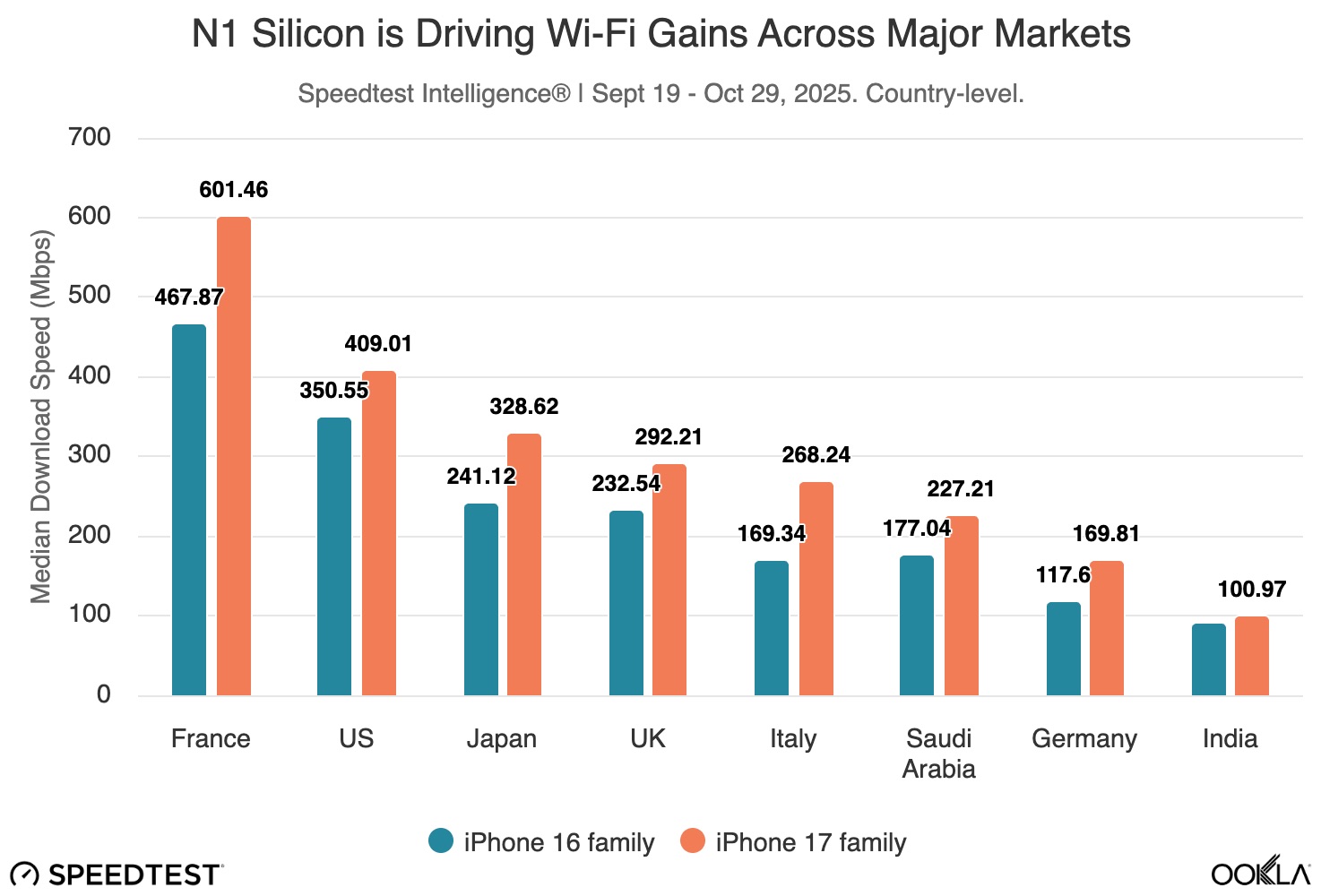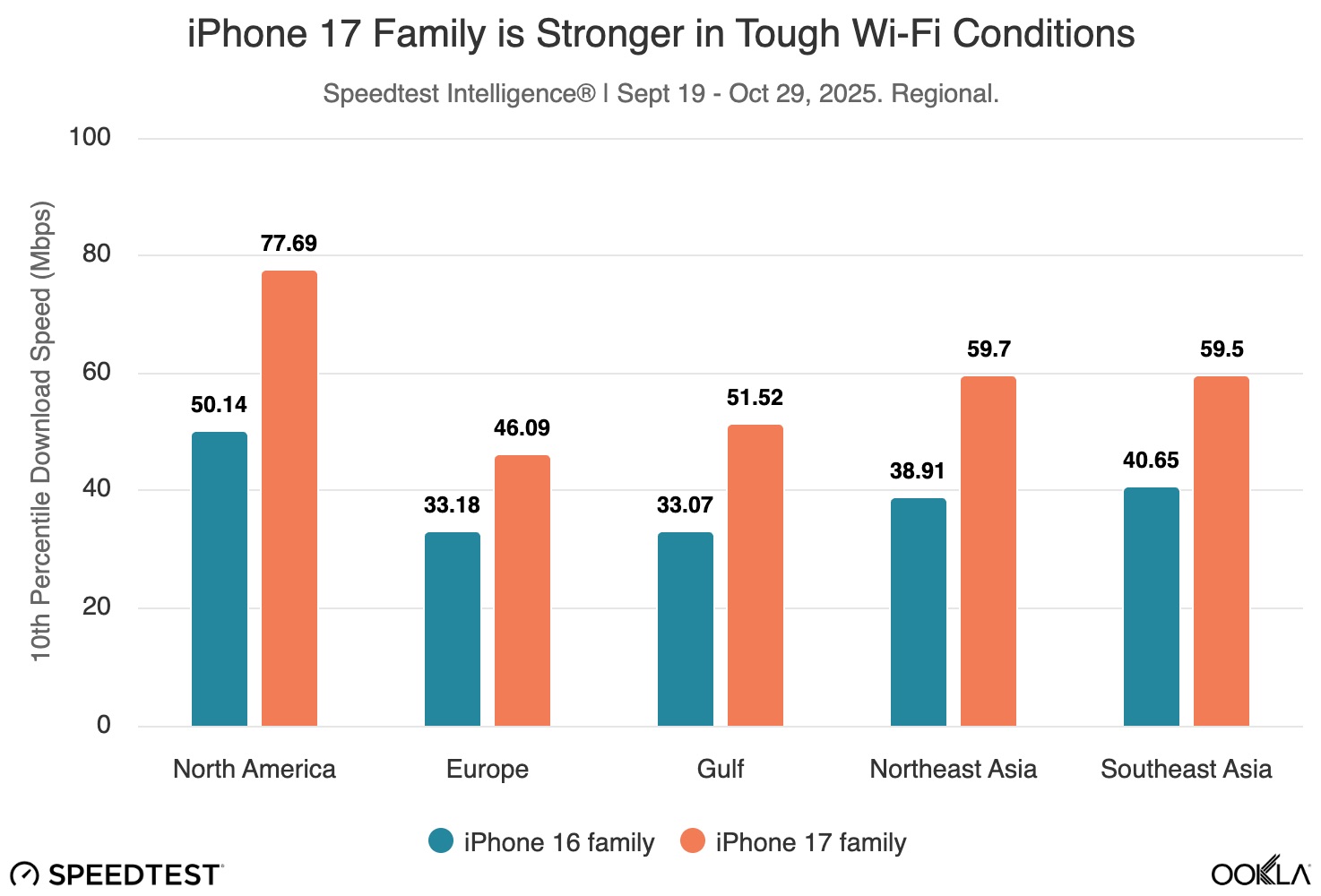The iPhone 17’s new N1 wireless chip brings a significant boost in Wi-Fi speeds. Tests conducted by Ookla show the newer iPhone models pulling faster speeds over Wi-Fi than their predecessors.
Based on the test data, the iPhone 17 pulled 40% faster Wi-Fi speeds than the iPhone 16.
Apple’s N1 chip brings a big leap in Wi-Fi performance
Apple switched to its in-house N1 wireless chip with the iPhone 17 family this year. It did not boast of any radical improvements. Like the iPhone 16, the iPhone 17 also supports Wi-Fi 7. The only notable change is an upgrade to Bluetooth 6.0 from Bluetooth 5.3.
The company only boasted that the switch from Broadcom’s wireless chip to the N1 will help improve the “overall performance and reliability of features like Personal Hotspot and AirDrop.” Tests from Ookla show that Apple might have undersold the improvements its N1 chip brings.
Their global median data shows iPhone 17 delivering 40% faster download speeds on Wi-Fi vs. the iPhone 16. The improvement was visible in every market Ookla measured, a strong sign that the N1 chip is driving the boost.

Photo: Ookla
“During the study period, the iPhone 17 family’s global median download of 329.56 Mbps was as much as 40% higher than the iPhone 16 family’s 236.46 Mbps.”
Upload speeds, too, saw a similar boost. They jumped from 73.68Mbps on the iPhone 16 to 103.26Mbps on the iPhone 17 — again, a substantial boost.
Bigger performance boost in challenging scenarios
More importantly, Ookla’s test shows the iPhone 17’s N1 chip delivers a “far bigger generational uplift at the 10th percentile than at the 90th.” They saw the same improvement when Apple moved to its in-house C1 modem.

Photo: Ookla
This means the iPhone 17 will deliver far better Wi-Fi speeds in challenging conditions than previous iPhones. As per the collected data, the iPhone 17 saw 60% higher speeds at the 10th percentile vs. 20% at the 90th percentile.
The data from Ookla once again confirms what we’ve seen before. Apple’s in-house chips delivering better real-world performance than the third-party solutions it relied on for years. It’s a testament to Apple’s silicon team and a clear example of how deep hardware–software integration can unlock meaningful improvements.


